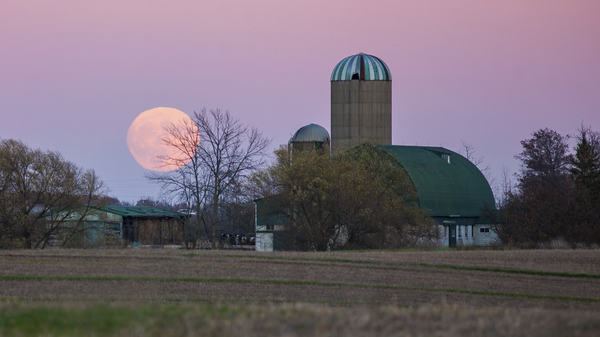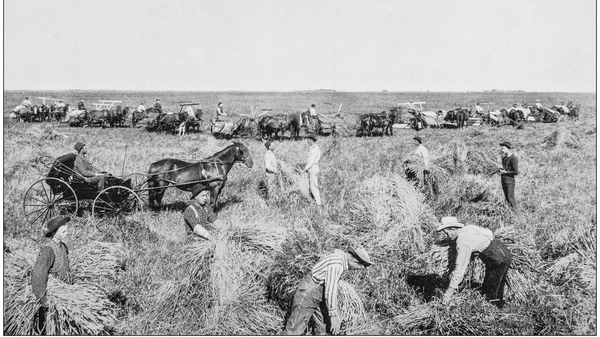Equinox Warps Moonrise Times as Harvest Moon Graces the Skies
You may have noticed that the Moon rises in quicker succession these days than it usually does. It’s a side effect of the approaching equinox—and one of the reasons why we call the next Full Moon the Harvest Moon.

Around the September equinox, moonrise intervals in the Northern Hemisphere are noticeably shorter around the Full Moon than during other parts of the year.
©iStockphoto.com/Trevor_Jones_Photo
Earth’s Tilt Shortens Moonrise Intervals
The September equinox is here, and it does strange things to the Moon.
Throughout the year, the moonrise happens about 50 minutes later each day, on average, around the Full Moon phase. But if you look at our moonrise times for September, you’ll notice that the day-to-day interval is much shorter around this time of the year for Northern Hemisphere locations: about 25 minutes for New York and under 10 minutes for places at higher latitudes, like Edinburgh in the UK.
This has to do with Earth’s axial tilt. At the September equinox, the North Pole is tilted away from the Moon during the First Quarter Moon phase and toward the Moon during the Third Quarter.
Moonlight Map: where’s the Moon visible right now?
Harvest Moon 2023
This year, the Harvest Moon is at 09:57 UTC on September 29.
For Northern Hemisphere dwellers, this means the Moon goes from rising unusually late (and setting early) at the First Quarter to rising unusually early (and setting late) at the Third Quarter.
This effect is greatest around the Full Moon, the phase at the midpoint between the Third and First Quarters, making for exceptionally short intervals between moonrises. In Edinburgh, the Full Moon on September 29 will rise at 19:04 (7:04 pm)—just 7 minutes later than the previous day.

Bringing in the harvest before winter could be a race against time. The Harvest Moon allowed farmers to keep harvesting at night.
©iStockphoto.com/ilbusca
Moonlight Harvest
All this may seem quite inconsequential for us today—but this warping effect has informed one of the best-known traditional Full Moon names still in use today: the Harvest Moon.
So, where’s the connection?
Imagine you’re a 19th-century farmer trying to bring in the harvest before the frost sets in. In some years, it can be a race against time, so you want to be able to keep harvesting even after dark.
This is where the Moon comes in: just as the Sun sets, the second-brightest object in the sky makes its way across the horizon, illuminating your crops and making your life a whole lot easier.
That’s why the Harvest Moon was defined as the Full Moon closest to the equinox in September. All other traditional Full Moon names are related to specific months—for example, the Strawberry Moon is the Full Moon in June. The Harvest Moon, on the other hand, can happen in September or October, depending on its proximity to the equinox.
Equilux: when day and night are (actually) equal
Illuminating the Night, Darkening the Day
Funnily enough, just about two weeks after the Full Harvest Moon brightens up our night sky, the New Moon will darken the day sky in some parts of the world: on October 14, an annular solar eclipse will sweep across the Americas, plunging everyone and everything in its path into relative darkness.